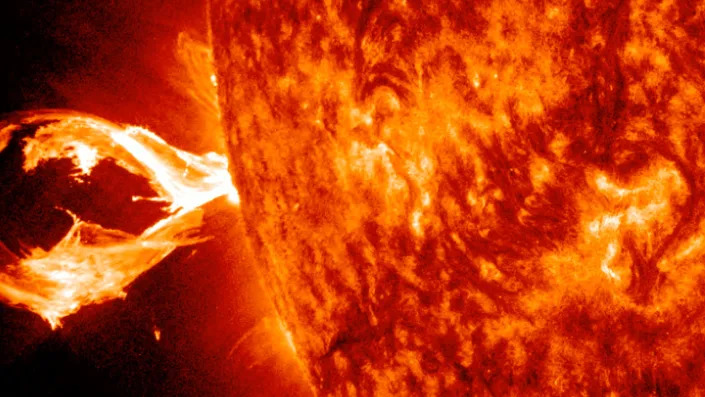Space claw! Sun shoots powerful flare that knocks out shortwave radio (video)
Elizabeth Howell
Wed, February 8, 2023

A powerful solar flare bursts out from the sun on Feb. 7, 2023.
A medium-sized solar flare briefly blocked shortwave radio Tuesday (Feb. 7).
The active sun fired off several solar flares in recent days, with one causing a momentary lapse in shortwave communications over the Pacific Ocean at 6:07 p.m. EST (2307 GMT), according to SpaceWeather.com.
The originating area is a huge Earth-facing sunspot, AR3213, which currently stretches across 62,000 miles (100,000 km) of the surface of the sun. Magnetic tangling in the sunspot caused the lines to "snap," firing off charged solar particles towards our planet via a medium-class (M6) flare.
Related: Strange unprecedented vortex spotted around the sun's north pole
The sun is climbing towards a peak in its 11-year cycle that it should reach in 2025. There's ample evidence of the sun firing off flares already in pictures and videos from sun-gazing satellites, like NASA's Solar Dynamics Observatory. These were shared extensively by users on Twitter.
Most solar activity is harmless and just causes brief interruptions in shortwave, but the sun is able to generate more powerful bursts of energy that can knock out satellites or other infrastructure.
RELATED STORIES:
— 2 massive 'active regions' on the sun have rotated into Earth's view
— Tiny, bright flashes on the sun could help scientists predict solar flares
— As sun's most active regions turn toward Earth, potential for violent solar activity builds
As such, NASA and the European Space Agency (ESA) partner with entities around the world to keep a 24/7 watch on our solar neighbor through telescopes, satellites and other observations in multiple wavelengths.
Burgeoning science also seeks to better understand how solar activity originates. For example, NASA's Parker Solar Probe and ESA's Solar Orbiter both swoop within a close range of the sun to sample the solar wind of particles that stream through the solar system, and to examine solar structures and the sun's atmosphere up close.
Elizabeth Howell is the co-author of "Why Am I Taller?" (ECW Press, 2022; with Canadian astronaut Dave Williams), a book about space medicine. Follow her on Twitter @howellspace. Follow us on Twitter @Spacedotcom or Facebook.
No comments:
Post a Comment